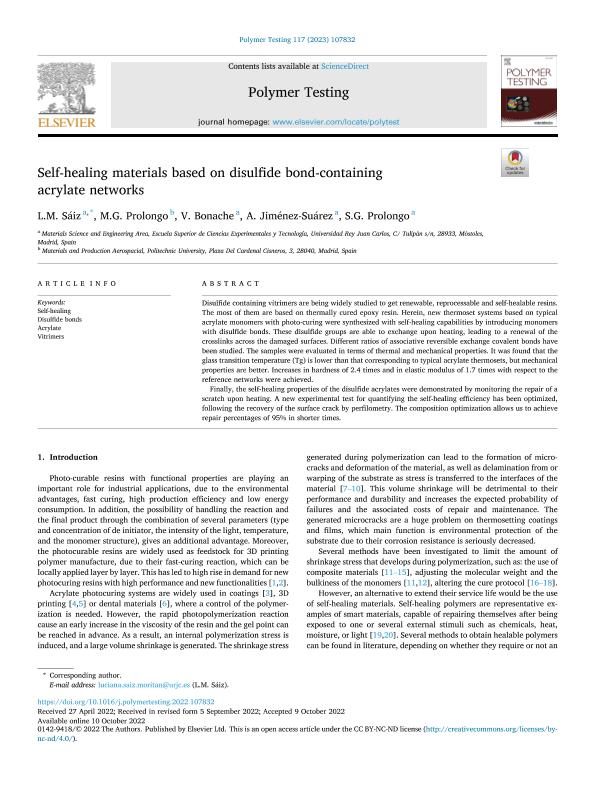Artículo
Self-healing materials based on disulfide bond-containing acrylate networks
Fecha de publicación:
01/2023
Editorial:
Elsevier
Revista:
Polymer Testing
ISSN:
0142-9418
Idioma:
Inglés
Tipo de recurso:
Artículo publicado
Clasificación temática:
Resumen
Disulfide containing vitrimers are being widely studied to get renewable, reprocessable and self-healable resins. The most of them are based on thermally cured epoxy resin. Herein, new thermoset systems based on typical acrylate monomers with photo-curing were synthesized with self-healing capabilities by introducing monomers with disulfide bonds. These disulfide groups are able to exchange upon heating, leading to a renewal of the crosslinks across the damaged surfaces. Different ratios of associative reversible exchange covalent bonds have been studied. The samples were evaluated in terms of thermal and mechanical properties. It was found that the glass transition temperature (Tg) is lower than that corresponding to typical acrylate thermosets, but mechanical properties are better. Increases in hardness of 2.4 times and in elastic modulus of 1.7 times with respect to the reference networks were achieved. Finally, the self-healing properties of the disulfide acrylates were demonstrated by monitoring the repair of a scratch upon heating. A new experimental test for quantifying the self-healing efficiency has been optimized, following the recovery of the surface crack by perfilometry. The composition optimization allows us to achieve repair percentages of 95% in shorter times.
Palabras clave:
ACRYLATE
,
DISULFIDE BONDS
,
SELF-HEALING
,
VITRIMERS
Archivos asociados
Licencia
Identificadores
Colecciones
Articulos(INTEMA)
Articulos de INST.DE INV.EN CIENCIA Y TECNOL.MATERIALES (I)
Articulos de INST.DE INV.EN CIENCIA Y TECNOL.MATERIALES (I)
Citación
Sáiz, Luciana María; Prolongo, M. G.; Bonache, V.; Jiménez Suárez, A.; Prolongo, S. G.; Self-healing materials based on disulfide bond-containing acrylate networks; Elsevier; Polymer Testing; 117; 1-2023; 1-9
Compartir
Altmétricas




